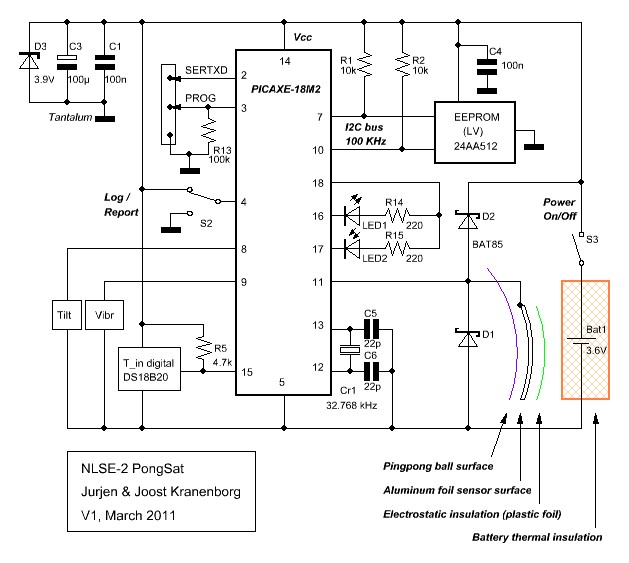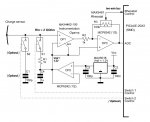kranenborg
Senior Member
Here I present a proposed design of the successor of the PongSat-18X NLSE-1 near-space satellite ( http://www.picaxeforum.co.uk/showthread.php?t=9236 ).
It appears that we will get a ticket by JPAerospace for a planned flight over a thunderstorm (date yet unknown, the flight will be somewhat higher than the previous flight if possible), so that made me decide that the NLSE-2 will become a PongSat dedictated to measuring electrostatic potential in the atmosphere. I want to use the 18M2 Touch facilities to try to estimate the electric field distribution as a function of elevation. I have no idea whether the Touch functionality will be sensitive enough for it, but with a large sensor surface (essentially the whole pingpong ball outer surface) it is worth a try. In each step the change in capacity is recorded as a change in atmospheric potential.
The Pongsat's outside surface will be wrapped with aluminum and connected with a Touch input and thus act as a electric field sensor. Subsequently the whole surface will be wrapped in plastic in order to avoid static electricity problems during handling by me or others.
Apart from this new feature the same sensor types as with NLSE-1 will be applied, ie. temperature, tilt, vibration, and optical sensors for measurement of light intensity.
Here is the initial scheme:

I imagine that the sensor voltage could sometimes be out of the 0 - Vcc range, so I decided to add a few safety measures by adding shunt diodes D1, D2 at the sensor input, as well as zener Diode D3
Could this design potentially work for measuring atmospheric electrostatic potential? Any opinions/suggestions are most welcome.
/Jurjen
It appears that we will get a ticket by JPAerospace for a planned flight over a thunderstorm (date yet unknown, the flight will be somewhat higher than the previous flight if possible), so that made me decide that the NLSE-2 will become a PongSat dedictated to measuring electrostatic potential in the atmosphere. I want to use the 18M2 Touch facilities to try to estimate the electric field distribution as a function of elevation. I have no idea whether the Touch functionality will be sensitive enough for it, but with a large sensor surface (essentially the whole pingpong ball outer surface) it is worth a try. In each step the change in capacity is recorded as a change in atmospheric potential.
The Pongsat's outside surface will be wrapped with aluminum and connected with a Touch input and thus act as a electric field sensor. Subsequently the whole surface will be wrapped in plastic in order to avoid static electricity problems during handling by me or others.
Apart from this new feature the same sensor types as with NLSE-1 will be applied, ie. temperature, tilt, vibration, and optical sensors for measurement of light intensity.
Here is the initial scheme:
I imagine that the sensor voltage could sometimes be out of the 0 - Vcc range, so I decided to add a few safety measures by adding shunt diodes D1, D2 at the sensor input, as well as zener Diode D3
Could this design potentially work for measuring atmospheric electrostatic potential? Any opinions/suggestions are most welcome.
/Jurjen
Last edited:

